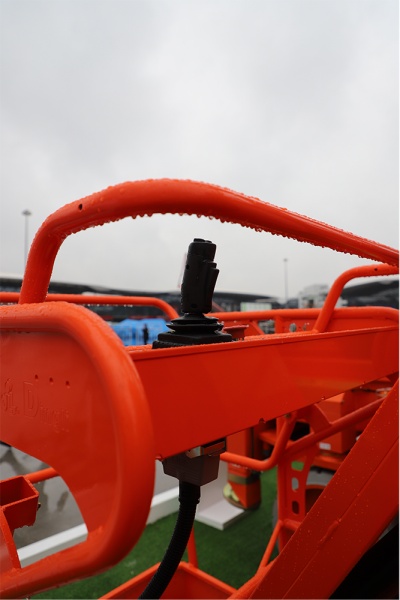Grip style control rods are essential components in a variety of applications, from industrial machinery to recreational vehicles. Their ergonomic design enhances user comfort and precision during operation, making them versatile for numerous tasks. This guide provides an overview of grip style control rods, alongside important considerations for safe and effective use.

Product Overview
Grip style control rods are designed to offer seamless control across various systems. Their construction typically includes a molded grip, ensuring ease of use while minimizing fatigue during extended operation. Depending on the model, these control rods can feature single-axis or multi-axis functionality, allowing users to manipulate machinery with accuracy.
The primary applications of grip style control rods include:
Industrial Equipment: Used in cranes, excavators, and other heavy machinery, these control rods enhance maneuverability, allowing for precise load handling.
Automotive Controls: Found in racing and recreational vehicles, grip style control rods enable drivers to navigate swiftly and efficiently.
Home Automation: In smart home systems, these control rods can manage devices such as blinds and automated doors for better convenience.
Gaming and Simulators: Many gaming systems utilize grip style control rods to provide realistic experiences in flight and driving simulations.
Various models may come equipped with features like customizable buttons, adjustable sensitivity, and different grip textures to suit user preferences and improve operational control.
Important Considerations
When using grip style control rods, adhering to certain guidelines can enhance safety and performance:
1. Proper Installation
To guarantee optimal functionality, install the control rod according to the manufacturer’s instructions. Ensure all connections are secure and the rod is mounted correctly to avoid any operational inconsistencies.
2. Calibration
Calibration is vital for maintaining accuracy. Ensure that the control rod is calibrated before initial use. This may involve adjusting the zero point and sensitivity settings according to the specific requirements of your application. Regularly recalibrating the rod can prevent drift and enhance precision.
3. Regular Maintenance
To keep the grip style control rod in peak condition, conduct routine maintenance checks. Clean the rod with a soft, damp cloth to remove dust and debris. Avoid using abrasive cleaners or solvents that could damage the surface. Inspect the connections and wiring for any signs of wear or damage, and replace any worn components as necessary.
4. User Training
Providing adequate training for operators is crucial. Users should understand how to manipulate the grip style control rod effectively to maximize its potential while minimizing risks. This includes recognizing how the rod responds to movements and understanding any adaptive features it may possess.
5. Environment Consideration
Consider the operating environment when using grip style control rods. Extreme temperatures, humidity, or exposure to corrosive substances can affect performance. Ensure that the rod is used within specified environmental conditions outlined by the manufacturer to maintain functionality.
6. Load Limits
Be aware of the load limits associated with the control rod. Exceeding these limits can lead to damage or failure of both the control rod and the machinery it operates. Always follow the guidelines provided for the equipment in use to prevent accidents.
Grip style control rods are invaluable tools that enhance control and precision across diverse applications. Understanding their features and following usage considerations is key to maximizing efficiency and ensuring safety. Proper installation, maintenance, and user training contribute to the longevity and effectiveness of grip style control rods in any operational scenario. Always refer to the specific user manual provided by the manufacturer for detailed instructions, ensuring the best possible performance from your grip style control rod.